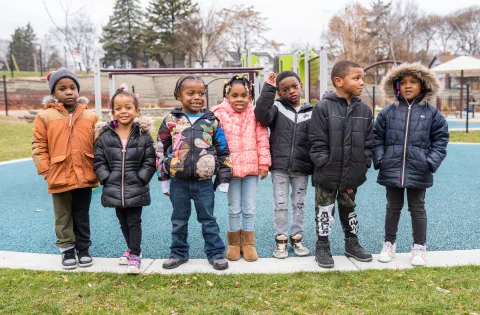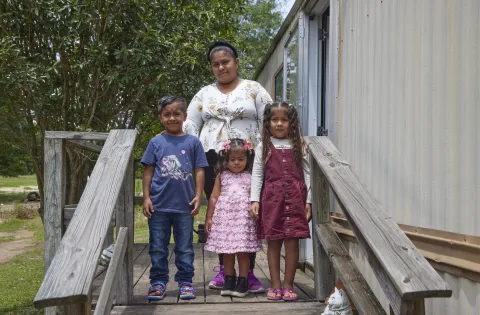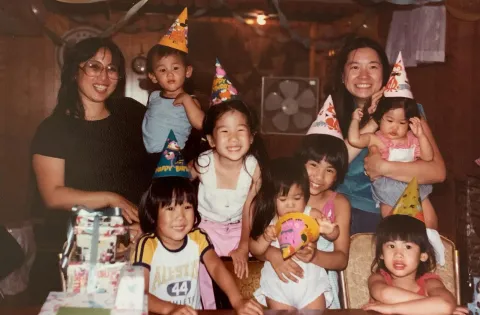This year, we are celebrating AAHNPI (Asian American, Native Hawaiian and Pacific Islander) Heritage Month by sharing stories from some of our staff. They come from a diverse array of roles, experiences and cultures that display the richness and diversity of this community. As we celebrate the 40th anniversary of Share Our Strength, the organization behind No Kid Hungry, we recognize the contributions that our AAHNPI staff, supporters and school heroes have made towards our goal of ending childhood hunger in America.
In what ways has your cultural heritage shaped your approach to working to end childhood hunger?
“In my family, food nourishes not only the body, but also the soul and is often an expression of love and care.
Food is not only a source of nutrition, but is also a connection to family, culture, and heritage. Some of my most vivid childhood memories are associated with cultural food traditions. When I am feeling ill, nothing is more comforting than my paternal grandmother’s (Nen Nen) jook (rice porridge). Food provides a pathway for me to stay connected to my cultural heritage, but it also connects me to others.
|
|
|
Both my grandmothers are immigrants from China who worked hard to provide for their families but also experienced challenges. My Por Por was widowed at a young age and was faced with supporting 4 children with limited career options. My Nen Nen was a seamstress in a Chinatown clothing factory, who, along with my grandfather, supported 5 children, including one special needs child.
As a child your sense of reality is the world around you and I did not make connections around the difficulties my family may have faced. Knowing now that my grandparents likely qualified for federal nutrition programs that would have helped them provide for their children but that they did not access due to awareness, language barriers and social stigma, helps drive my advocacy to lower barriers and expand access to these vital programs for qualified families.”
- Stephanie Wu Winter, associate director, equity, diversity and inclusion
What is your personal connection to ending childhood hunger with No Kid Hungry?
“I came to the US with a suitcase in one hand and a single $20 bill in the other. My wife and I struggled mightily in our initial years in the US while going through grad school, finding it very difficult to make ends meet. In the process, there were weeks when we also benefited from SNAP (then known as food stamps)!

Growing up in India, we were at best, in the lowest tier of the middle-class by Indian standards. So, the experience of poverty and deprivation was part of nearly the first 25 years of my life. That struggle and daily life challenges inspired in me early on a strong desire to first, get out of poverty myself, and then help pull as many others out of it, as I can. Our collective work at Share Our Strength, the organization behind No Kid Hungry, affords me exactly that opportunity which I cherish and treasure dearly. It is an unbelievable chance to integrate my personal values with my professional work.
- Jeetu Jodhpurkar, managing director of international strategy
What makes you proud of the AANHPI Community?
“Growing up in America, I heard many negative connotations that painted some AANHPI communities' “collectivism” as a weakness and limitation. Personally however, I witnessed great strength and beauty in my AAHNPI community spaces.

When my father was chronically ill, I saw church aunties step up and drop off meals, while husbands showed up and did yard work he could no longer do. If one is struggling, everyone makes it their prerogative to struggle alongside them. To me, this sense of collectivism bolsters individualism. I see this very same sentiment prevalent in my work today, as No Kid Hungry champions partners, schools and community organizations to become even stronger by working together.”
- Taylor Unoki, program associate
What does food mean in your community/culture?
“Food reflects our culture, our ancestry, our physical roots. In my family, my mom was from Beijing, a noodle based culture.
But Dad came from the South, Henan, where they are more rice based, given the climate. In addition, southern China tended to be poorer than the North historically. This is reflected in the cuisine too. Poorer regions meant less quality ingredients so it was enhanced with lots of spice (like, Szechuan cuisine). So, as a family, we ate more rice than noodles and hot and spicy dishes!

We always made dumplings at family holiday gatherings and every person had a task. Some would roll out the dumpling skins while others would wrap the dumplings. The little ones could even join in by mixing the filling or “pounding” flat the little dough pieces to make perfect circular wraps. All while we gathered around the kitchen and talked. My siblings and I cherish this tradition and you will see my daughter Mia at age 5 making dumplings.”
- Julie Chen, general counsel
Thank you for celebrating with us. Like these AAHNPI heroes you too can join the fight against childhood hunger.
Donate: 1 dollar can help provide 10 meals* for kids. Your support will help us fund meal programs all over the country and help us advocate for policies that will help kids get the meals they need" *Donations help support programs that feed kids; No Kid Hungry does not provide individual meals. Learn more at NoKidHungry.org/OneDollar




